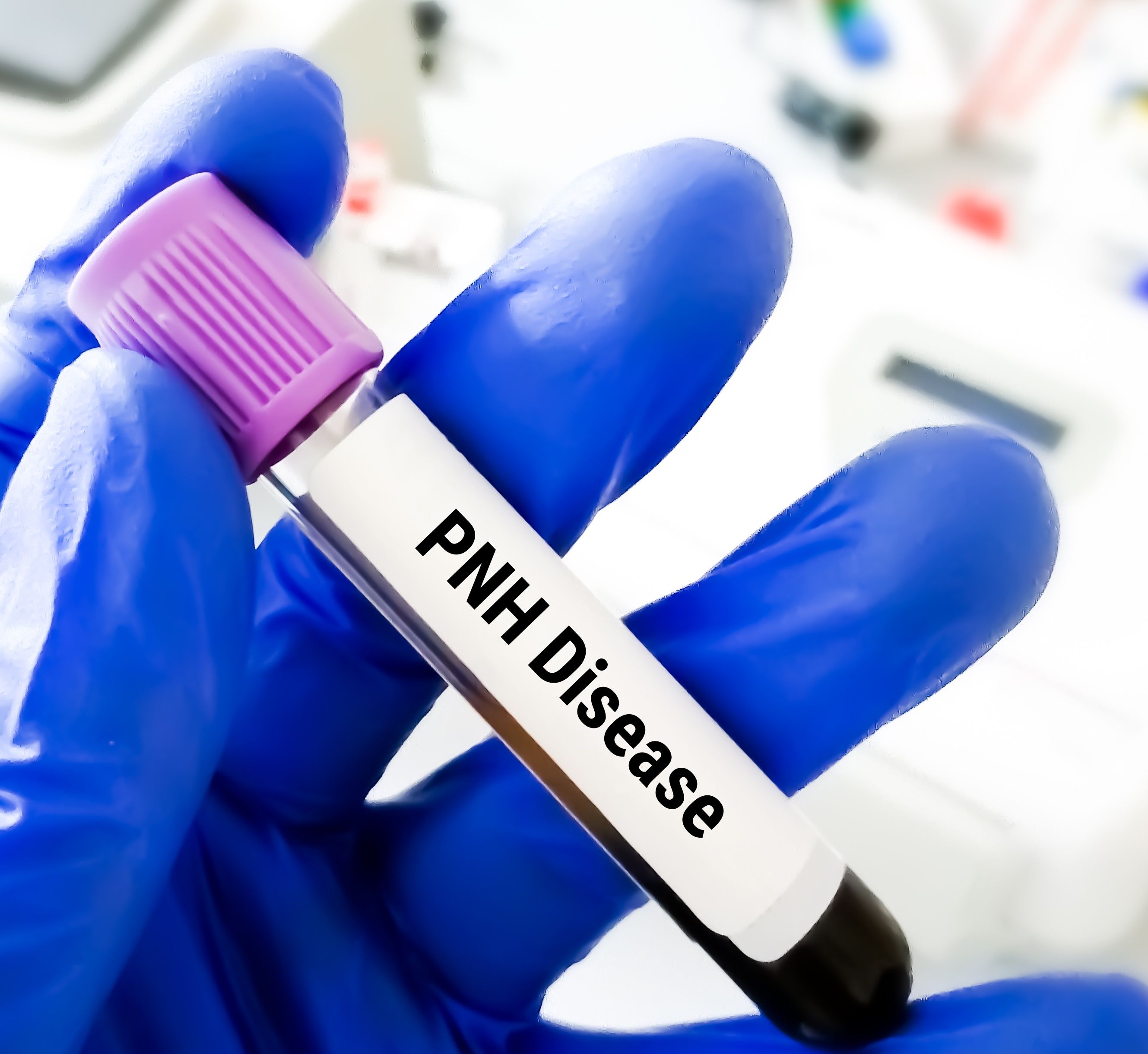- Center on Health Equity & Access
- Clinical
- Health Care Cost
- Health Care Delivery
- Insurance
- Policy
- Technology
- Value-Based Care
Pegcetacoplan Contributes to Better Outcomes in PNH vs Other Treatments
An analysis of 2 phase 3 trials supporting the use of pegcetacoplan (PEG) in the treatment of paroxysmal nocturnal hemoglobinuria (PNH) assessed the benefits of this treatment compared with eculizumab (ECU) and supportive care measures.
Pegcetacoplan (PEG) demonstrated superiority over eculizumab (ECU) and supportive care in the management of lactate dehydrogenase (LDH) and fatigue in patients with paroxysmal nocturnal hemoglobinuria (PNH), according to a study published in Drugs in R&D.1
PEG is injected 2 times per week and binds with complement protein C3 in a process that helps regulate complement activation.2 The approval of PEG in the treatment of PNH was supported by results from the phase 3 PEGASUS trial (NCT03500549), which included patients with PNH who still struggled with anemia even after a 3-month treatment regimen with ECU—a monoclonal antibody that binds with complement protein C5 and has been approved for PNH since 2007.3
PEGASUS affected significant changes in hemoglobin levels at 16 weeks compared with baseline (adjusted mean: 3.84 g/dL; P < .0001). In total, 85% of these patients (n = 35) were no longer in need of transfusions compared with 15% (n = 6) of patients who were receiving ECU.2 These outcomes were additionally bolstered by the phase 3 PRINCE trial (NCT04085601), which featured 53 treatment-naïve patients with PNH who exhibited significantly reduced LDH and stabilized hemoglobin levels compared with controls (P < .05).2
PNH Blood Sample Test | image credit: Saiful52 - stock.adobe.com

In the wake of these trials, the present researchers aimed to establish normalization rates for hemoglobin, LDH, and fatigue for patients with PNH. Their analysis served to paint a more comprehensive picture of the impacts of PEG treatment on the quality of life and hematologic outcomes in patients with PNH.
The normalization rates were determined as:
- Hemoglobin greater than or equal to the lower limit of the sex-specific normal range (females: 12.0 g/dL; males: 13.6 g/dL)
- LDH ≤226 U/L, the upper limit of normal
- Functional Assessment of Chronic Illness Therapy-Fatigue (FACIT-Fatigue) ≥43.6, the general US population norm1
The authors noticed that the normalization of hemoglobin concentrations could be observed around week 2 in both trials for patients treated with PEG (PEGASUS: 43.9%; PRINCE: 22.9%). In the absence of supportive care—specifically transfusions—hemoglobin normalization was seen in 34.1% of PEGASUS participants and 45.7% of PRINCE participants at 16 and 26 weeks (the end of their respective randomized treatment periods).
In the PEGASUS group, participants achieved hemoglobin normalization at a median of just over 4 weeks post-PEG initiation; the PRINCE trial saw participants reach this mark at just over 6 weeks. The authors added that no participants who were assigned to ECU treatment in the PEGASUS trial or supportive care in the PRINCE trial achieved normalization at weeks 16 or 26. Nearly 25% of patients treated with PEG in PEGASUS reached normalization by the end of the 48-week open-label period without transfusions; 30.8% of patients who had the option to switch from ECU to PEG after week 16 also reached normalization at this point.
As for LDH concentrations, almost 88% and over 51% of patients in PEGASUS and PRINCE exhibited normalization at week 2. At PEGASUS’s 16-week randomized treatment period, more than 70% of patients treated with PEG hit this mark compared with 15.4% of patients treated with ECU. At PRINCE’s 26-week treatment period, over 65% of patients treated with PEG exhibited normalized LDH. The PEGASUS trial had a median time to normalization of 1 day, whereas PRINCE had a median time of 18 days.
At the end of the PEGASUS 48-week open-label period, LDH normalization without transfusion was seen in 56.1% of participants who had only been treated with PEG and 51.3% of those who switched from ECU to PEG after week 16.
Furthermore, in PEGASUS, a substantial amount of patients treated with PEG had normalized FACIT-Fatigue scores compared with patients treated with ECU (48.8% vs 10.3%) at 16 weeks, with a median time to normalization of 2-3 weeks. As for PRINCE, at 26 weeks a total of 68.6% of patients treated with PEG achieved normalization of FACIT-Fatigue scores compared with 11.1% of those who were administered supportive care. In this group, normalization was reached at a median of just over 4 weeks for those treated with PEG.
At the end of the PEGASUS open-label period, over 34% of participants solely treated with PEG exhibited normalized fatigue scores. This rate was notably 51.3% for participants who switched from ECU to PEG at week 16.
Overall, the authors concluded, their findings further support the use of PEG in the treatment of PNH.
"These results demonstrate that pegcetacoplan is superior to both eculizumab and supportive care in achieving normalization of hemoglobin, LDH, and FACIT-Fatigue scores in patients with PNH and persistent anemia despite at least 3 months of treatment with eculizumab, and in C5 inhibitor–naive patients with PNH," the authors wrote.
Therefore, ensuring equitable access to this form of treatment represents an important venture for addressing the needs of patients with PNH.
References
1. Mulherin BP, Yeh M, Al-Adhami M, Dingli D. Normalization of hemoglobin, lactate dehydrogenase, and fatigue in patients with paroxysmal nocturnal hemoglobinuria treated with pegcetacoplan. Drugs R D. 2024. doi:10.1007/s40268-024-00463-9
2. Besa EC. Paroxysmal nocturnal hemoglobinuria treatment & management. Medscape. Updated April 18, 2024. Accessed May 28, 2024. https://emedicine.medscape.com/article/207468-treatment#d1
3. Eculizumab. DrugBank Online. Updated June 20, 2023. Accessed May 28, 2024. https://go.drugbank.com/drugs/DB01257
